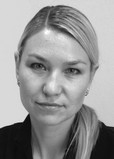Adaptation Model of Organization of Students’ Motor Activity
Фотографии:
ˑ:
PhD, Associate Professor L.A. Kadutskaya1
Dr.Hab., Professor L.N. Voloshina1
Dr.Hab., Professor V.L. Kondakov1
Dr.Hab., Professor V.N. Irkhin1
1Belgorod State National Research University, Belgorod
Objective of the study. The article presents the results of analysis of domestic and foreign literature devoted to the study of the problems of regulation of motor activity in children, as well as the results of analysis of normative program-methodical documentation, educational standards, exemplary training programs and other documentary materials that regulate students’ motor activity.
Structure and methods of the study. The analysis of recent studies of motor activity in children of preschool and school age enables to identify common scientific interests of domestic and foreign scientists and testifies to the urgency of the issue of optimization of students’ motor activity.
Conclusion. The problem of regulation of children’s motor activity in terms of the adaptive approach is still understudied. Based on the analysis results, we developed and proposed an adaptation model of organization of children’s motor activity basing on comprehensive consideration of students’ adaptation to the educational environment.
Keywords: motor activity, students, adaptation, adaptive approach, modeling.
References
- Bal'sevich V.K. Ontokineziologiya cheloveka [Human ontokinesiology]. M.: Teoriya i praktika fiz. kultury i sporta publ., 2000. 275 p.
- Vilenskaya T.E. Ob'ektivnyie riski protsessa fizicheskogo vospitaniya i pedagogicheskie sposobyi ih minimizatsii: na primere protsessa fizicheskogo vospitaniya mladshih shkolnikov [Objective risks of physical education process and pedagogical ways to minimize them: case study of physical education process at primary school]. Doct. diss.. (Hab.). Krasnodar, 2012.557 p.
- Voloshina L.N. Razvitie zdorovesberegayuschego obrazovatelnogo prostranstva doshkolnyih uchrezhdeniy: metodologiya, teoriya, praktika [Development of health protection educational space in preschool institutions: methodology, theory, practice]. Doct. diss. (Hab.). Yekaterinburg, 2006.443 p.
- Danileyko M.S. Adaptatsiya detey k shkolnyim usloviyam sredstvami fizicheskoy rekreatsii [Adaptation of children to school conditions by means of physical recreation]. PhD diss. abstr.. St. Petersburg, 2008.27 p.
- Komkov A.G., Lubysheva L.I. Sotsiologicheskie osnovyi zdorovogo obraza zhizni i fizicheskoy aktivnosti shkolnikov [Sociological basis of healthy lifestyle and physical activity of schoolchildren]. Fizicheskaya kultura: vospitanie, obrazovanie, trenirovka. 2003. no. 1.pp. 4046.
- Krivolapchuk I.A. Optimizatsiya funktsionalnogo sostoyaniya detey i podrostkov v protsesse fizicheskogo vospitaniya [Optimization of functional state of children and adolescents in physical education process]. Grodno, 2007.606 p.
- Neverkovich S.D. Pedagogika fizicheskoy kulturyi i sporta [Pedagogy of physical education and sports]. M.: Akademiya publ., 2010.336 p.
- Chernyshenko Yu.K. Nauchnopedagogicheskie osnovaniya innovatsionnyih napravleniy v sisteme fizicheskogo vospitaniya detey doshkolnogo vozrasta [Scientific and educational foundations of innovative directions in preschool physical education syste]. Doct. diss. (Hab.). Krasnodar, 1998. 50 p.



 Журнал "THEORY AND PRACTICE
Журнал "THEORY AND PRACTICE